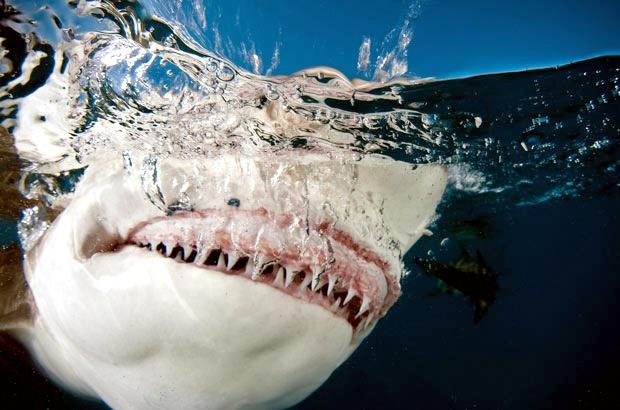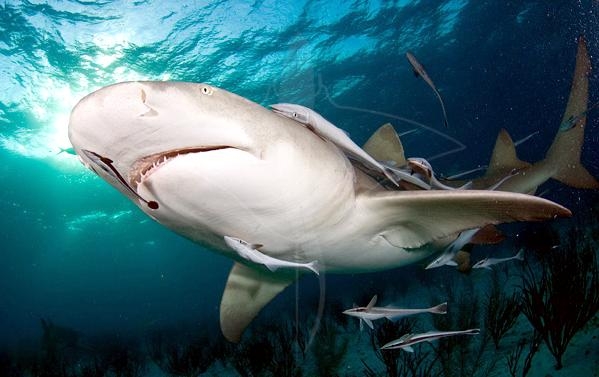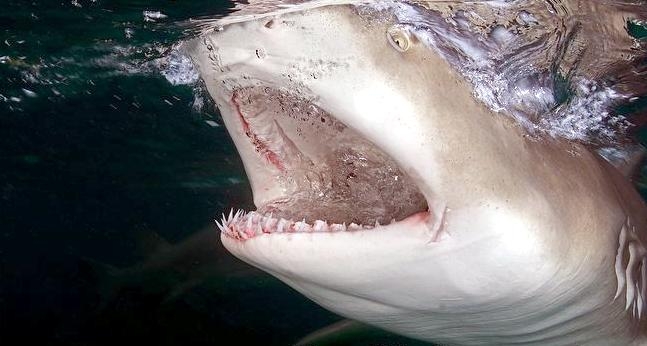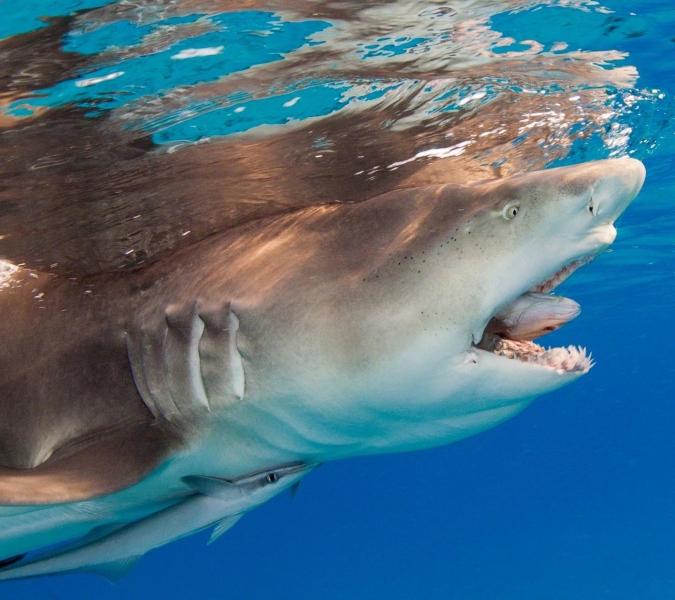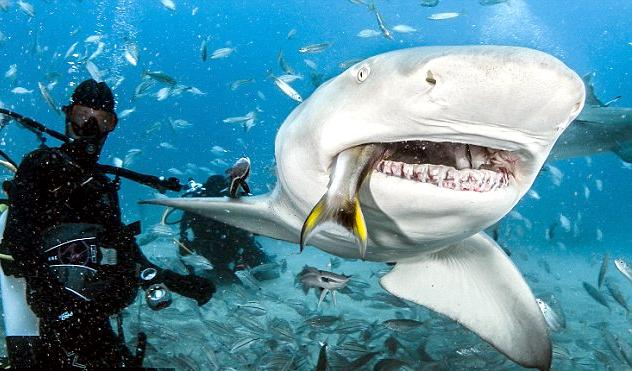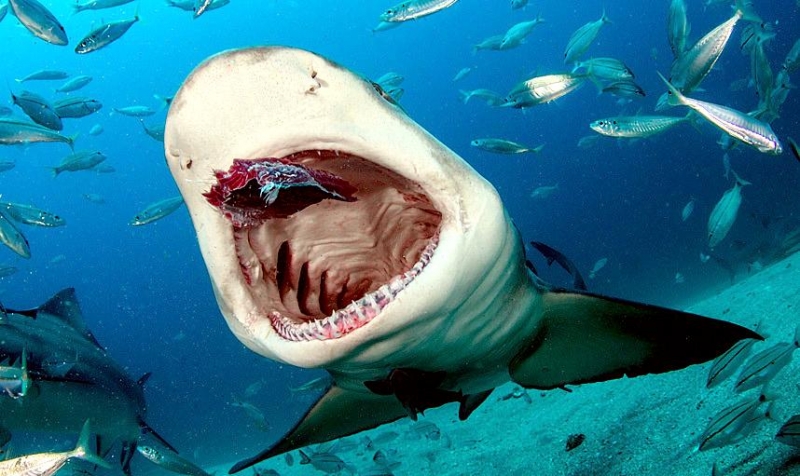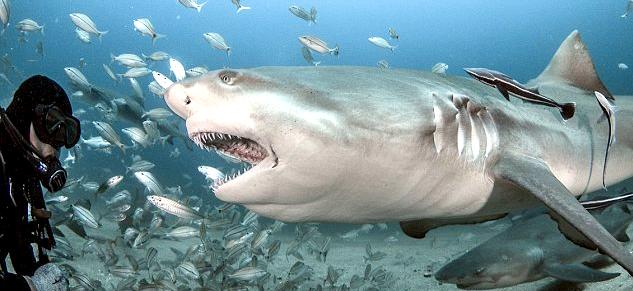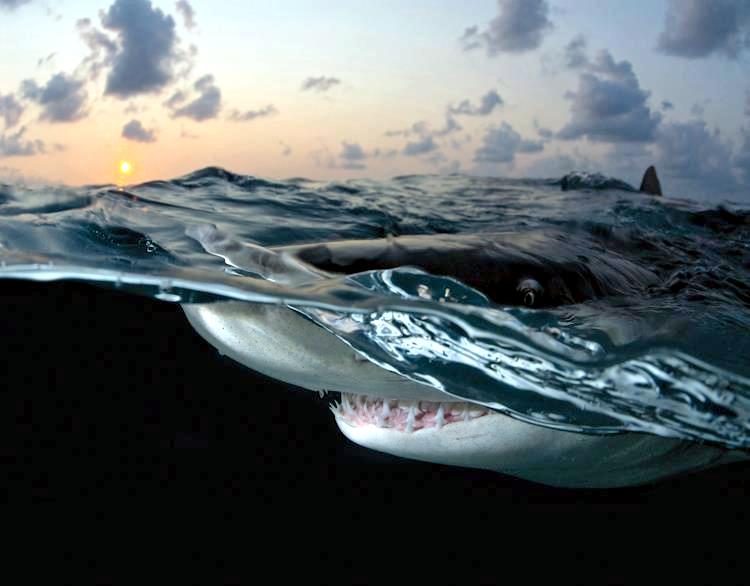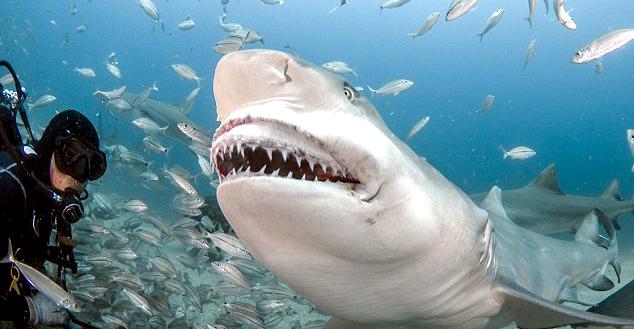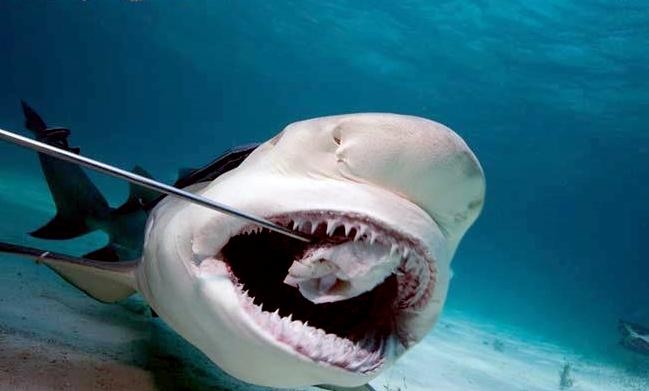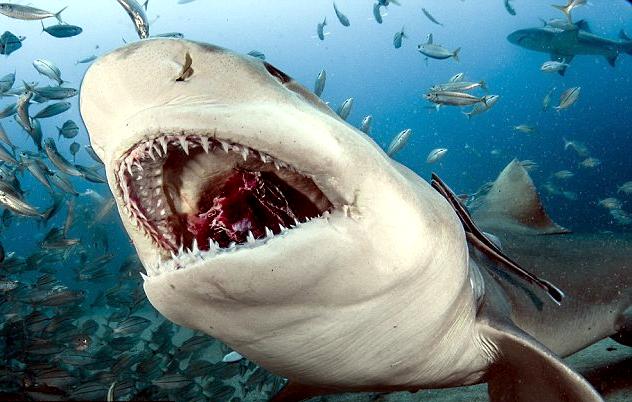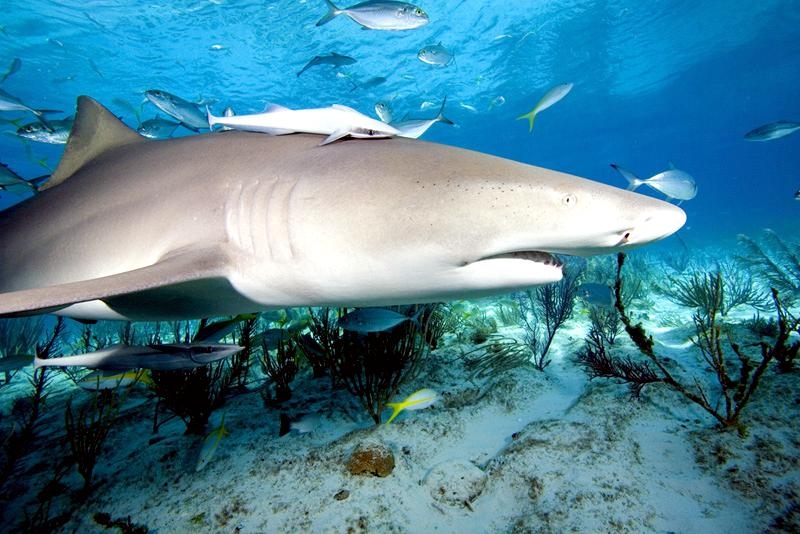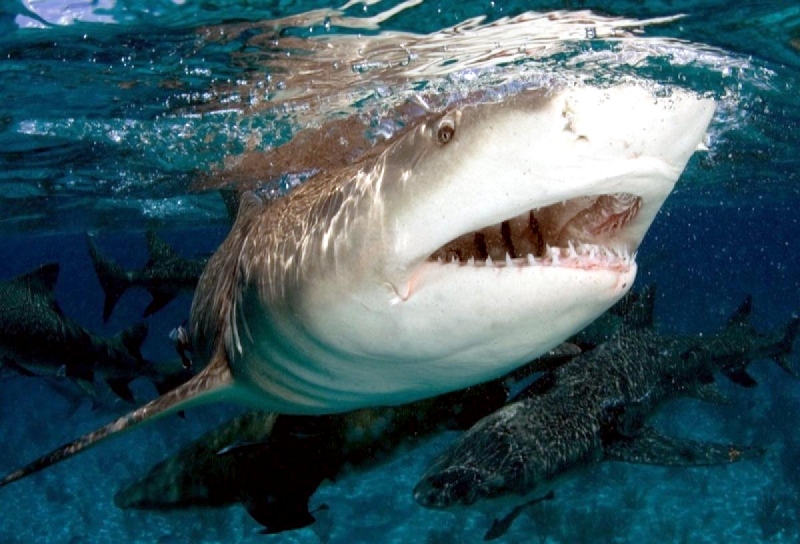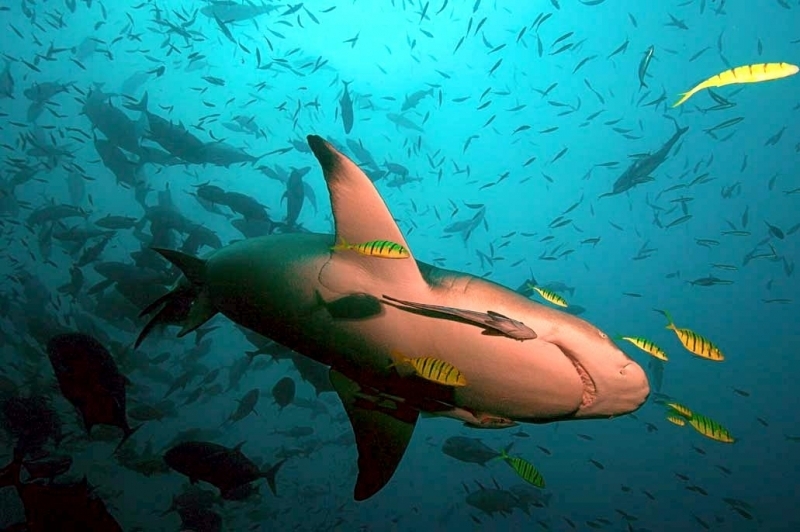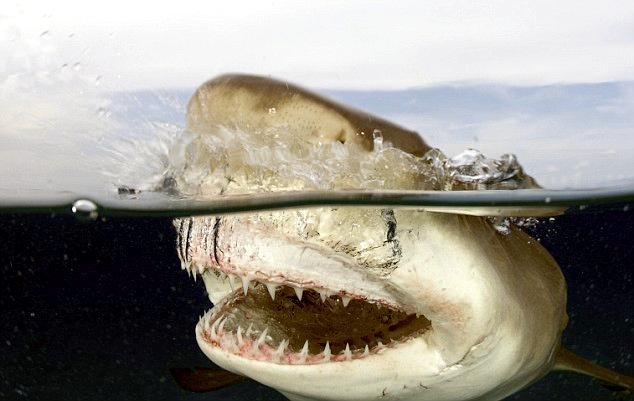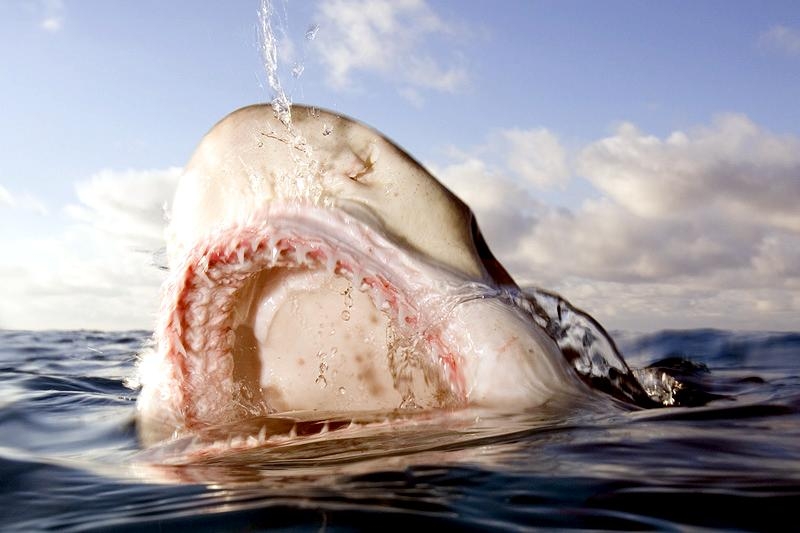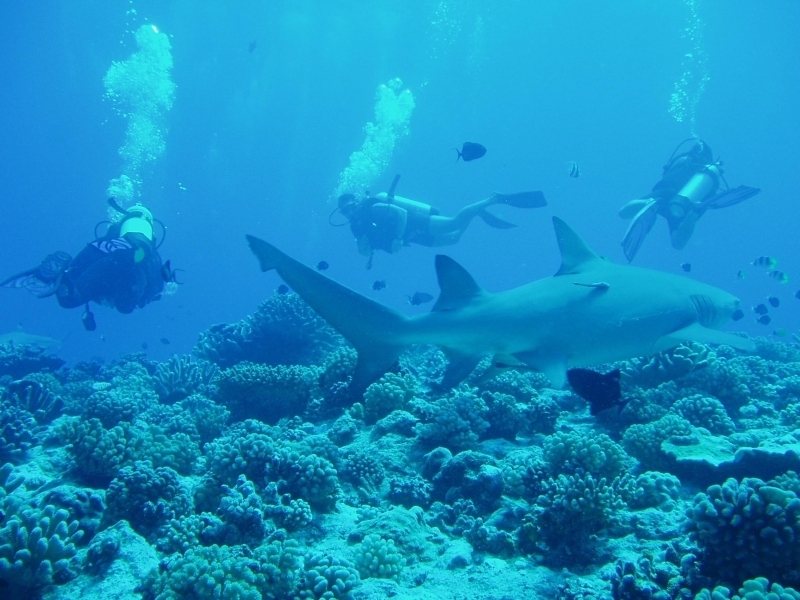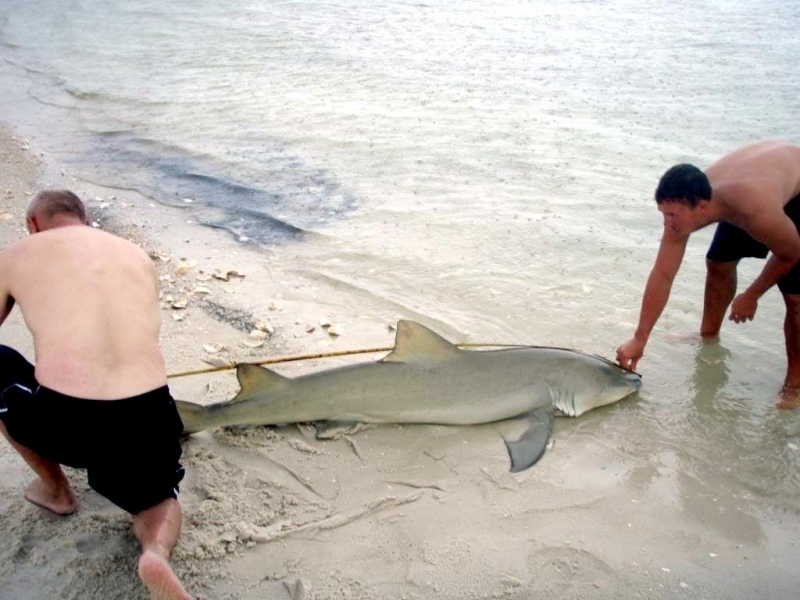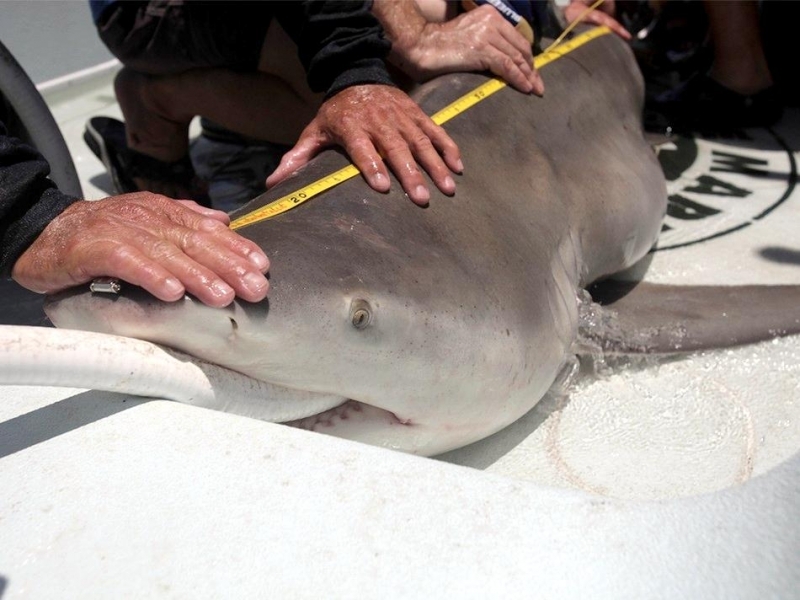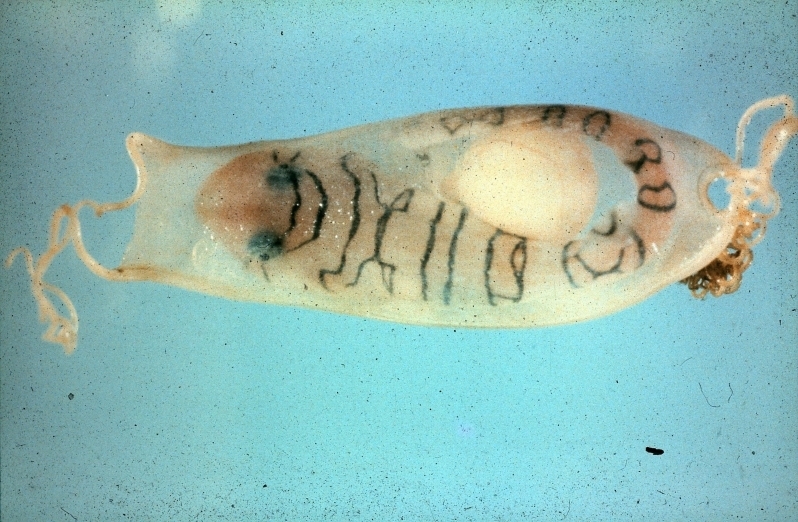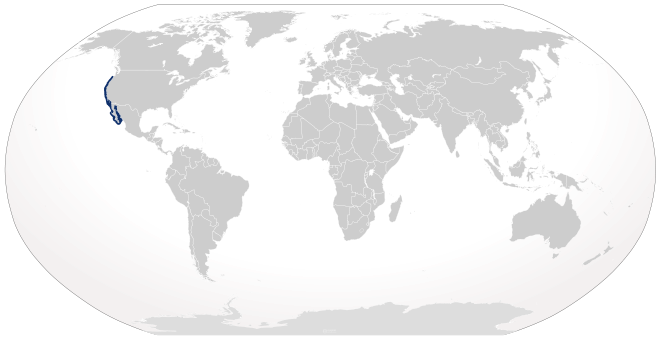“Negaprion brevirostris”
Lemon Sharks are named for their pale yellow to brown coloring on their dorsal (upper) sides and a lighter yellow on their ventral (lower) sides. The body of the Lemon Shark is large, robust and commonly reaches lengths between 2.4-3 meters with a maximum of 3.2-3.5 meters. The growth rate of the Lemon Shark is 0.45 centimeters per year. This species has 2 dorsal fins of similar size; the first is positioned far back on the body behind the pectoral fins, the second dorsal is located slightly forward of the origin of the anal fin. There is no inter-dorsal ridge. The pelvic fin has slightly concave rear margins and the outer margin of the pectoral fin is slightly convex. Both pelvic & pectoral fins are slightly curved (falcate). This shark has a blunt, short snout. Lemon Sharks inhabit coastal inshore northeast Atlantic waters from New Jersey in the US to Southern Brazil, the Gulf of Mexico and Caribbean. Lemon Sharks can be found along the coasts of Senegal and Ivory Coast in the eastern Atlantic. In the North Pacific, Lemon Sharks range from the Gulf of California and Baja California south to Ecuador. Lemon Sharks are commonly found in subtropical shallow waters to depths of about 92 meters near coral reefs, mangroves, enclosed bays, sounds and river mouths although Lemon Sharks do not seem to travel far into freshwater.
The Lemon Shark is viviparous, meaning females form a placenta-like connection with each of the developing fetuses and eventually give birth to live free-swimming pups. Lemon Sharks reach sexual maturity at 6-7 years of age. Mating takes place in the springtime in shallow water followed by a 10-12 month gestation period. Females return to shallow nursing grounds between April-September to give birth to 4-17 pups that measure between 60-65 centimeters. Pups remain in the nursing grounds for several years, their range expanding as they grow. Lemon Sharks are potentially dangerous to humans, however the International Shark Attack File has only reported 10 unprovoked bites by Lemon Sharks, all of which occurred in Florida and the Caribbean and none of the recorded attacks were fatal. They can be found in open water during migrations, but overall they tend to stay along the continental & insular shelves. This species is known to form groups based on size & sex and have been observed in groups near docks & fishing piers at night, returning to deeper water during the day. Lemon Sharks feed on bony fish including catfish, mullet, jacks, croakers, porcupine fish and cowfish as well as guitarfish, stingrays, eagle rays, crabs and crayfish. On occasion, Lemon Sharks will also eat seabirds and smaller sharks.

